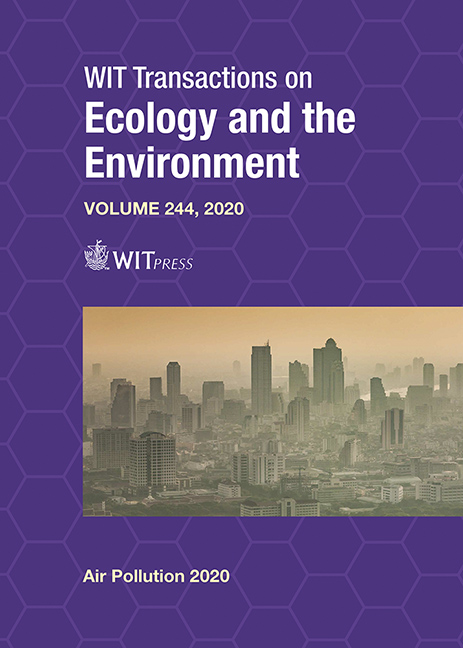CONTRIBUTION OF NON-RENEWABLE SOURCES FOR LIMITING THE ELECTRICAL CO2 EMISSION FACTOR IN ECUADOR
Price
Free (open access)
Transaction
Volume
244
Pages
13
Page Range
65 - 77
Published
2020
Size
722 kb
Paper DOI
10.2495/AIR200061
Copyright
WIT Press
Author(s)
RENÉ PARRA
Abstract
Electricity production based on fossil fuels emits air pollutants and greenhouse gases (GHG). Today electricity and heat production contribute up to 42% of CO2 emissions. Therefore, the decrease of these emissions is considered a priority worldwide. One component of the Paris Agreement focused on decreasing the world’s mean electrical CO2 emission factor to 65.0 g CO2 kWh-1 by 2040. Based on official statistics of 18 years (2001–2018), we obtained this indicator for Ecuador. It varied between 188.6 and 397.4 g CO2 kWh-1. The lowest values were 188.6 and 197.1 g CO2 kWh-1, corresponding to 2017 and 2018 respectively, which were the years with the highest participation of renewable sources (73.6% and 72.3%, respectively, mainly hydropower) and the lowest contribution of fossil fuels facilities (26.3% and 27.3%, respectively). The promotion of hydropower facilities produced a decrease in the emission factors during the last two years. From 2001 to 2018, the mean performance of the Ecuadorian power facilities has been 0.36. The lowest historical emission factor (188.6 g CO2 kWh-1) was three times the world’s mean value expected in the Paris Agreement. Based on the trend of the historical emission factors, we estimated that the contribution of fossil fuel facilities should be lower than 9.0% for decreasing to 65.0 g CO2 kWh-1. The increase in the performance of power facilities in Ecuador is a priority to reduce the emissions of both air pollutants and GHG. If the efficiency of power facilities increases to 0.45–0.55, their contribution can increase to 11.3%–13.8%, respectively. Although the magnitude of electrical emission factors expected by the Paris Agreement is an essential reference, the proper participation of fossil fuel facilities in Ecuador must be defined, additionally taking into account the potential influence of climate change on hydropower production. As occurred in 2010, hydropower energy can be severely affected by dry seasons.
Keywords
energy mix, indirect emissions, ecological footprint, carbon footprint, sustainability





